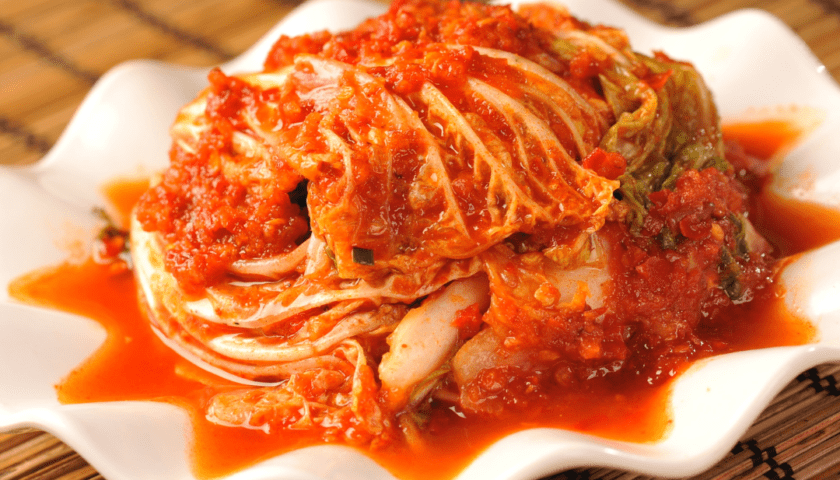If you’ve explored Korean cuisine or dined at a Korean restaurant, you’ve likely encountered *kimchi*. This staple Korean side dish is famous for its vibrant flavours and health benefits, and it’s a crucial element of Korean culinary tradition. But what exactly is kimchi, and what does it taste like? Let’s dive into the world of this iconic fermented dish which is sometimes referred to as pickle.
What is Kimchi?
Kimchi is a traditional Korean dish made from fermented vegetables, primarily *napa cabbage* and *Korean radishes*, seasoned with a variety of spices and ingredients like garlic, ginger, chilli pepper, and *gochugaru* (Korean red pepper flakes). The fermentation process gives kimchi its distinct tang and long shelf life, making it a valuable part of Korean food culture that dates back over 3,000 years.
There are hundreds of varieties of kimchi, each region of Korea adding its own twist depending on local produce and climate. While cabbage kimchi is the most popular, other versions use cucumber, radish, or even seafood.


The Fermentation Process
The unique flavour of kimchi comes from the fermentation process, which not only preserves the vegetables but also gives them a complex, tangy taste. The vegetables are salted to remove excess water and then mixed with the seasoning. After packing the mixture tightly in jars, it’s left to ferment for days or weeks, depending on the temperature and desired sourness. The longer it ferments, the more pungent and tart it becomes.
What Does Kimchi Taste Like?
The taste of kimchi is a symphony of flavours that might be new to the uninitiated but is highly addictive once you’ve acquired it. Here’s a breakdown of what to expect:
1. Spicy: The chilli peppers and *gochugaru* bring heat to the dish. The level of spiciness can vary, with some types being mild and others bringing a significant kick.
2. Sour: The fermentation process results in a tangy, sour taste similar to sauerkraut but with more depth. This acidity is refreshing and balances out the spice.
3. Salty: Since the vegetables are salted to remove moisture, a briny, salty undertone is always present.
4. Umami: Thanks to ingredients like fish sauce or shrimp paste used in the seasoning, kimchi carries a deep umami flavour, giving it a savoury complexity.
5. Crunchy: Even after fermentation, kimchi maintains a satisfying crunch, especially when made with cabbage or radish. The texture contrasts beautifully with the strong flavours.
Health Benefits of Kimchi
Kimchi is often considered a superfood, and for good reason. It’s rich in probiotics due to the fermentation process, which aids in digestion and gut health. It’s also packed with vitamins A, B, and C, and its main ingredient, cabbage, is full of fibre and antioxidants. Eating kimchi regularly can boost immunity, promote healthy skin, and even contribute to weight loss due to its low-calorie content.
How to Eat Kimchi
Kimchi is incredibly versatile. In Korea, it’s typically served as a side dish, known as *banchan*, and accompanies almost every meal. But it’s also used in various recipes, from soups like *kimchi jjigae* to fried rice (*kimchi bokkeumbap*). You can even enjoy it on a sandwich, in tacos, or with scrambled eggs for a fusion twist.
Kimchi is more than just a side dish—it’s a flavour-packed, nutritious food that reflects the heart of Korean culture. Its spicy, sour, salty, and umami-rich profile might be intense for first-timers, but once you get a taste, it’s hard to forget. Whether you eat it as a condiment or incorporate it into your cooking, kimchi is a delicious way to experience the bold flavours of Korea.
Looking to order Korean food near you? Find your nearest Korean takeaway on All Eat App and order the food you like at lowest menu prices.